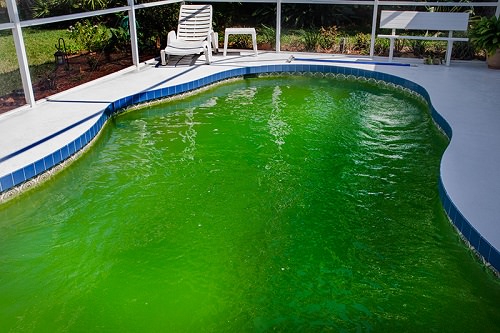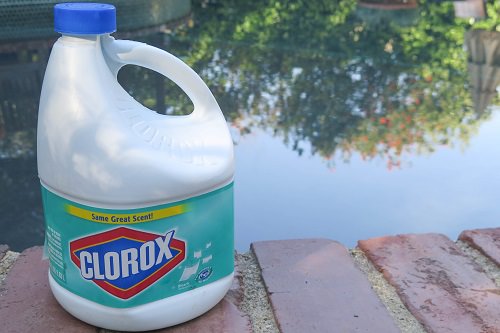Check out this step-by-step instructional guide that will help you to learn how to clean a green pool with bleach without any expensive chemicals.
Having green pool water is a sign of the presence of algae and bacteria, which is unsafe for swimmers. You can quickly get an algae-free pool, the only thing you’ve to do is to shock it with household chlorine bleach. But make sure to adjust the swimming pool’s pH and alkalinity level first, which ensures the bleach’s optimum efficiency. It’s one of the most commonly used pools sanitizing agent because of its disinfecting properties.
How to Clean a Green Pool With Bleach?
Maintaining the cleanliness of a pool is a cumbersome task, especially when it’s affected by green algae. To make things easier for you, below, we have collected a step-by-step guide that will help you out.
Step 1. First Balance the Chemicals
Before adding chemicals to kill algae or other harmful pathogens, it’s vital to check the pH and alkalinity levels, which should be between 7.2 – 7.8 and 80-120 ppm. Any pH level higher then 7.8, depletes its effectiveness. You can try a pool test kit to know these levels. If it’s below the recommended level of a minimum of 7.2, then add sodium bicarbonate. However, if the pH is above 7.8, then use dry acid or muriatic acid to get it down. To know the exact amount of these chemicals, check out this handy tool that’ll do the job for you.
Step 2. Brush the Pool
Before ‘shocking the pool,’ it’s necessary to brush off the algae present on the pool walls, floor, liner, tile grout, and ladders using a pool cleaning brush. You have to remove the sediment as well that is developed at the bottom of the pool. These tasks are important because it helps the bleach to work more effectively.
Step 3. Test Cyanuric Acid Concentration
To get a shiny clean pool using bleach, the cyanuric acid must be between 20-50 ppm. Simply buy a tool kit and check the cyanuric acid levels. If it’s below the minimum, then add a stabilizer to adjust it. Read the directions carefully written on the label of the stabilizer product.
Step 4. Measuring Pool Volume
To decide the amount of bleach, it’s vital to know the volume of the pool. Simply check out this handy tool that will help you out. The ideal free chlorine level is 1-3 ppm, but to shock the pool, it must be increased to 5-10 ppm. For this, use 5 gallons of household bleach for 30,000 gallons of water.
Step 5. Shock the Pool
Always shock your swimming pool in the late afternoon or early evening, as bleach gets degraded in the presence of sunlight. Add it into the water by walking around the perimeter of the pool, and don’t forget to circulate the water for 4-5 hours, ensuring the bleach gets appropriately mixed. After 24 hours, you’ll see cloudy water that should be discharged from the pool immediately.
Notes
- Remember to clean the pool’s cartridge filters, sand filters, and DE filters properly during the treatment.
- Before starting the above steps, make sure to wear a good quality face mask and hand gloves to avoid any mishaps.
- Always remember to stay out of the pool, until the chlorine drops to safe levels.
- Guide your kids, elderly, and pets to stay far away from the pool while the treatment is going on.
- It’s highly advisable to hire a pool cleaning professional rather than doing this job on your own.
Cleaning a green pool is not an easy task, but after following the above steps, you’ll do it easily without any hassle. Besides, keep the spiders out of the swimming pool with these quick tricks.


